In a hyperconnected and busy modern world, we see an attitude developing that touches every part of our lives: we crave meaningful experience and genuine connections with each other and our planet, slowing down, and staying local. Vacations and the way we travel, too, are changing with modern desires and priorities. The rise of the home-sharing platform Airbnb and the popularity of home-stays are perhaps the best barometer of the desire for local experience of geography, family culture, and heritage. Gone are the days of high-end exclusive resorts, isolated in their opulence; and dry hotels with their standard room designs, pressed and powdered bellhops, and odd-smelling, distant concierge. Travelers are ditching travel packages and attraction tours in busy major cities for slow-paced rural adventures.
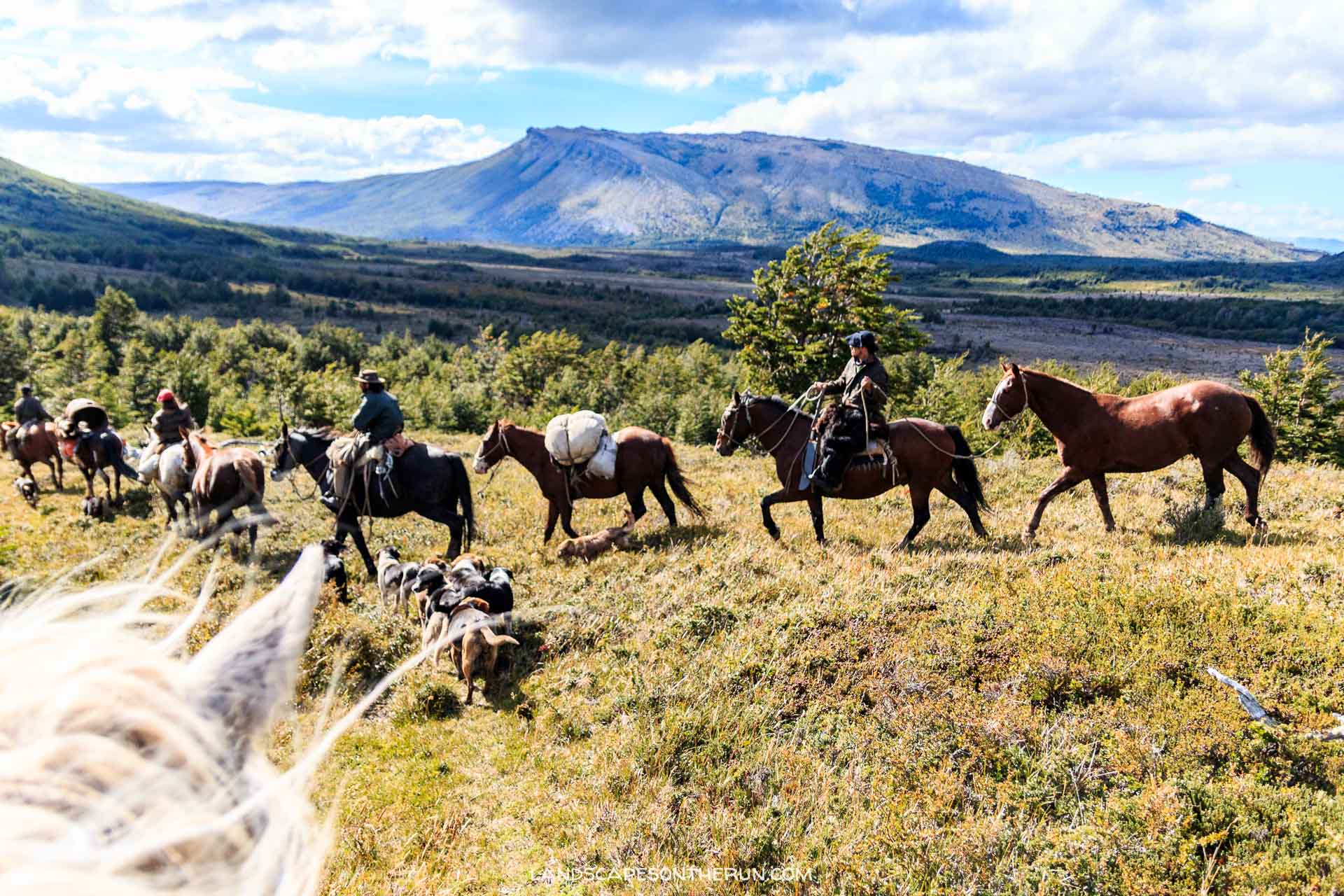
On western side of Peninsula Antonio Varas, in the Patagonia mountains, Estancia Mercedes is an Agriturismo stay on” estancia,” or large grassland plots of land for cattle-raising. The family that founded Estancia Mercedes have opened their farm to agritourism to maintain their way of life culturally and financially, inviting visitors to experience their traditions.
Italy, the fifth most visited country for international tourism, defined and popularized the concept of agriturismo, or agritourism, for the world: that is simply, a working farm that takes in guests. For the traveler, this would usually entail staying in a charming countryside town, former country house, updated to include all of the modern creature comforts, while preserving the vintage. Often sumptuous meals are provided by the stay’s kitchen or restaurant, with fabulous local produce and homemade products (think farm-raised chickens, bee’s honey, aromatic herbs, and fresh-picked fruit from the orchard). With this comes the unique opportunity to get involved with farming activities and learn about food sourcing depending on your stay of choice, from milking cows to wine production to learning how to make cheese and sausage.
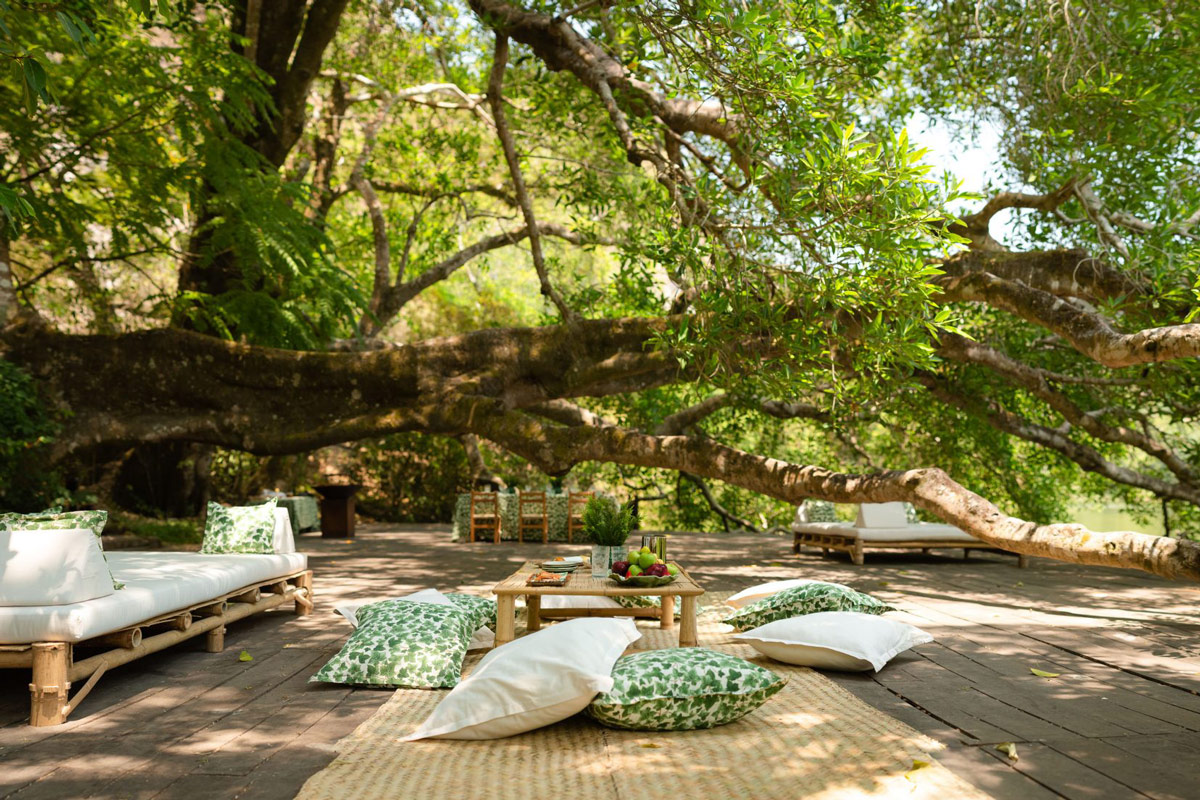
Mexico’s Hacienda de San Antonio agriturismo, discussed below, and their lush outdoor picnic setting.
A trip to Italy usually warrants pilgrimages to the most popular tourist spots, the “Big Three” cities of Rome, Venice, and Florence. However, given Italy’s rich history—with centuries of agrarian society and pastoral village life—a trip to the Italian countryside offers perhaps the best taste of the country. From agriturismo stays, travelers can explore ancient architecture in historic villages, experience local craftsmanship, and immersive aspects of Italian history and culture.
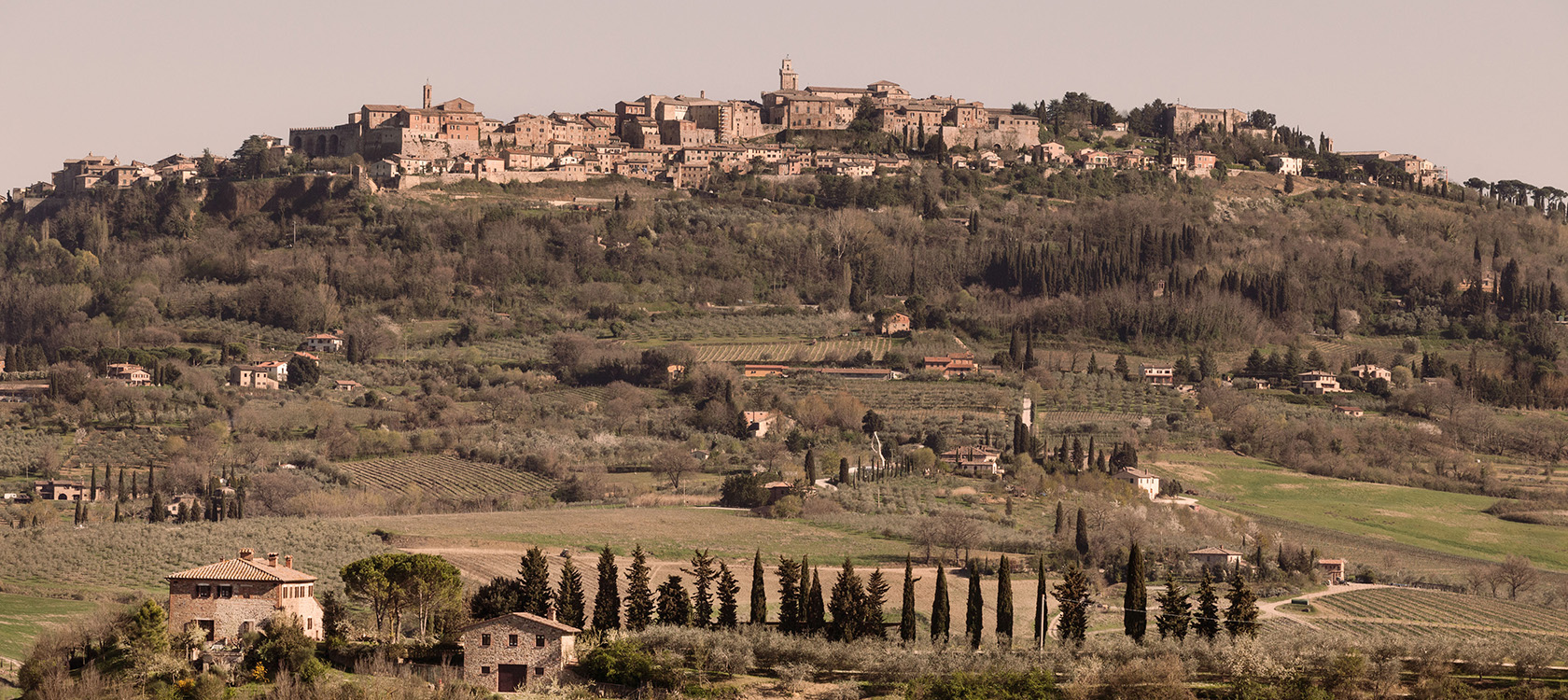
Lupaia is perched on a hilltop overlooking Montepulciano, a medieval and Renaissance hill town and comunne, and surrounded by Tuscan countryside.
In the heart of Tuscany is Lupaia, a downright magical countryside estate and former goat farm from the 1600s which now welcomes international guests as the perfect Tuscan hideaway, with access to local medieval villages, vineyards and olive groves. At Lupaia, five ancient farm buildings have been lovingly restored to compliment modern day comforts, with all of the rustic charm and each suite individually designed.
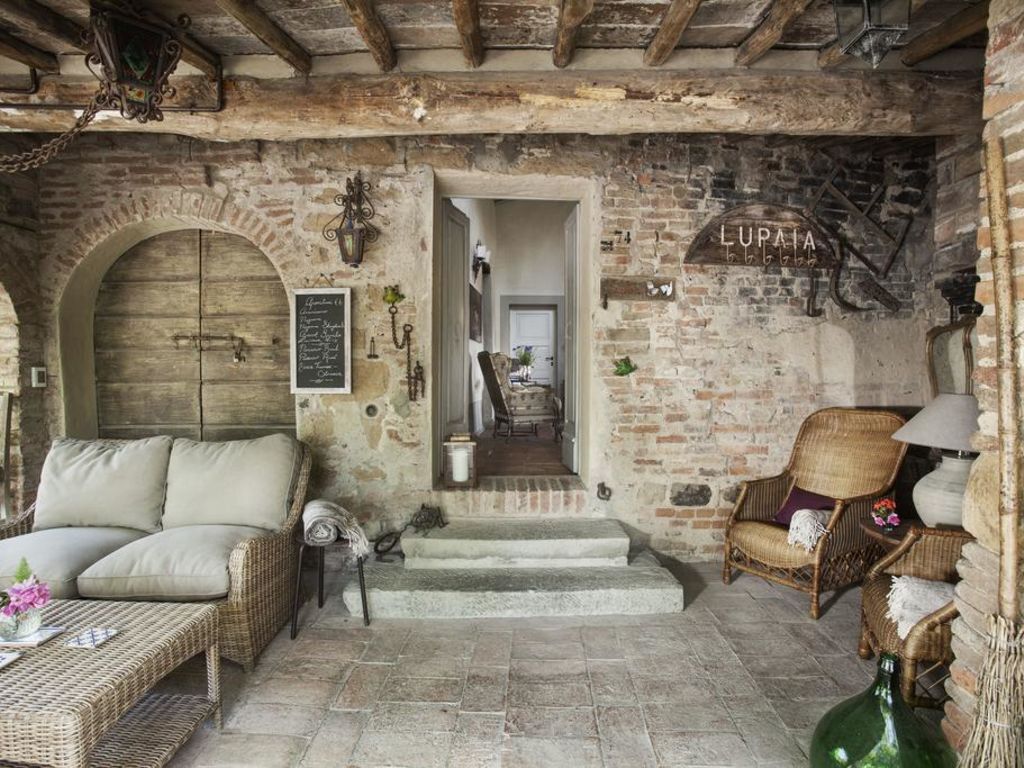
Lupaia interior design, with historic stonework.
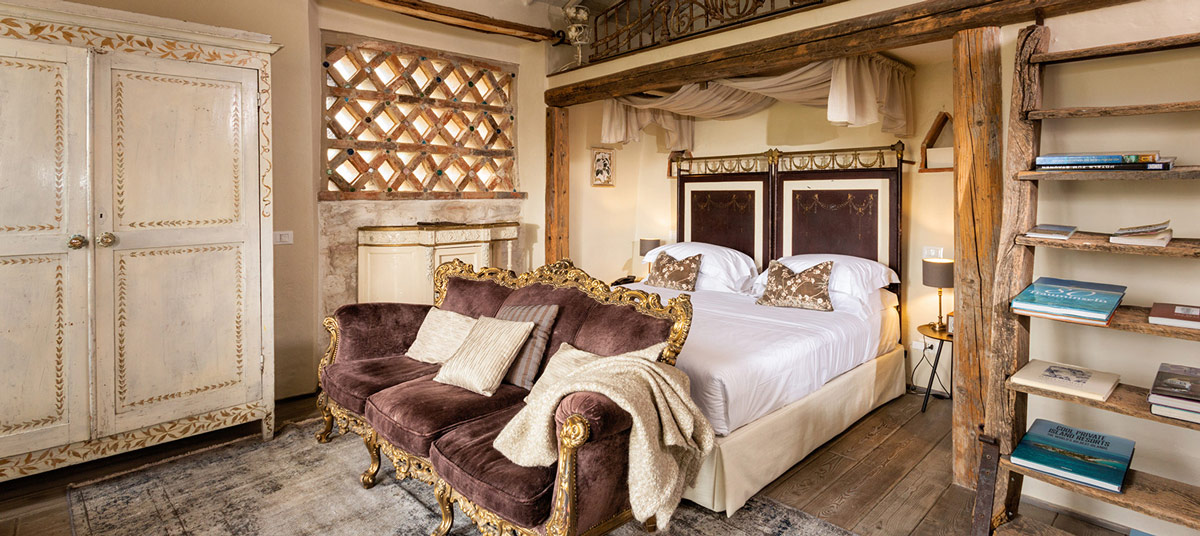
One of five ancient buildings restored and converted into a luxury suite at Lupaia.
.
One of the best features of agriturismo stays are included and often extravagant meals, and at Lupaia’s open kitchen, local delicacies, homemade breads and cakes, and seasonal organic produce farmed from the estate are served lovingly. The hosts of Lupaia, married couple Heidi and Christopher Mueller, dreamed of opening a romantic Italian inn, and are passionate about helping travelers explore local events and attractions perfectly tailored to their stay.
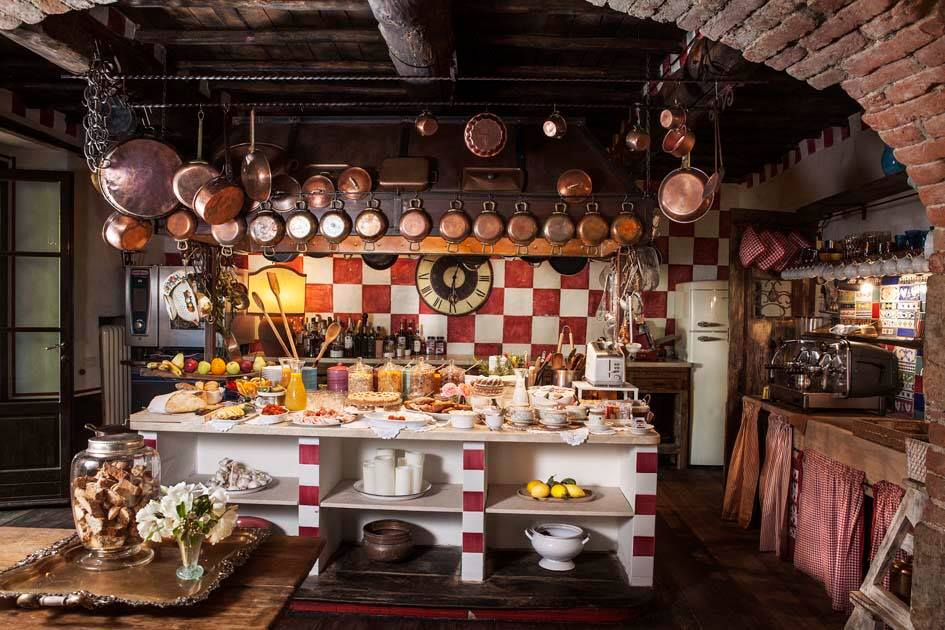
Lupaia’s well-stocked open kitchen, with a warm romantic feel.
Perhaps for your next travel experience you’d like to stay domestic, and truly keep it local. Luckily, though popularized in Europe, agriturismo-style farmstays are available in nearly every country. According to the USDA, in 2012, just over 33,000 U.S. farms offered agritourism and recreational services such as farm or winery tours, hayrides, hunting, fishing, and other such activities.
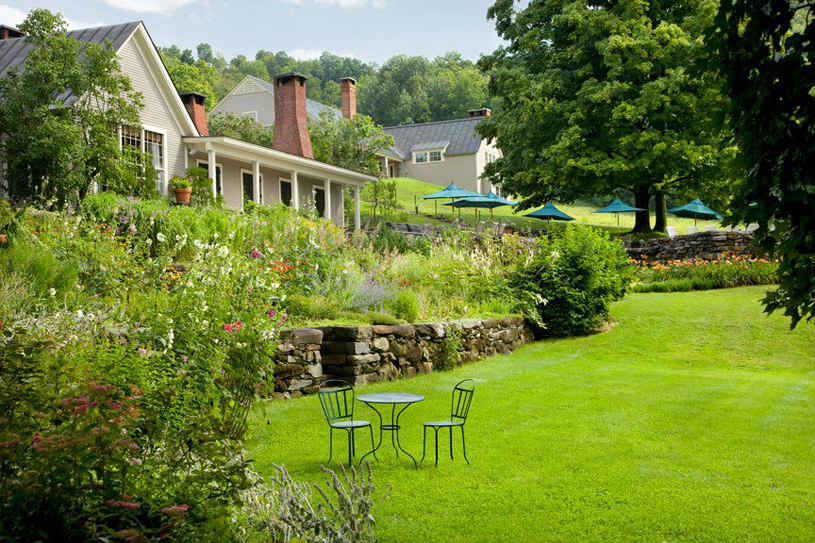
The lush greenery of Twin Farms.
Twins Farms in Vermont is one popular stay, in an 18th-century farmhouse situated on 300-acres of bucolic farmland, rejuvenating in farmhouse suites replete with antique finishes and charming character. Opulent meals, that include a caviar and champagne experience, all meals in-room, and boxed lunches to take on activities are made lovingly with garden produce, but with a catch: the culinary team takes guests’ dietary preferences and restrictions, but creates their own menu each day based on seasonal availability and what’s freshest.
This is perhaps an intimidating relinquishment of choice, but well worth it for the delightful surprises. And perhaps the release of choice is just what you need on your “unplug & unwind” vacation. Twin Farms was founded by Nobel Prize-winning author Sinclair Lewis and journalist Dorothy Thompson, and in the true manner of their lifestyle, the potential for immersive nature activities as well as quiet contemplation is truly endless.
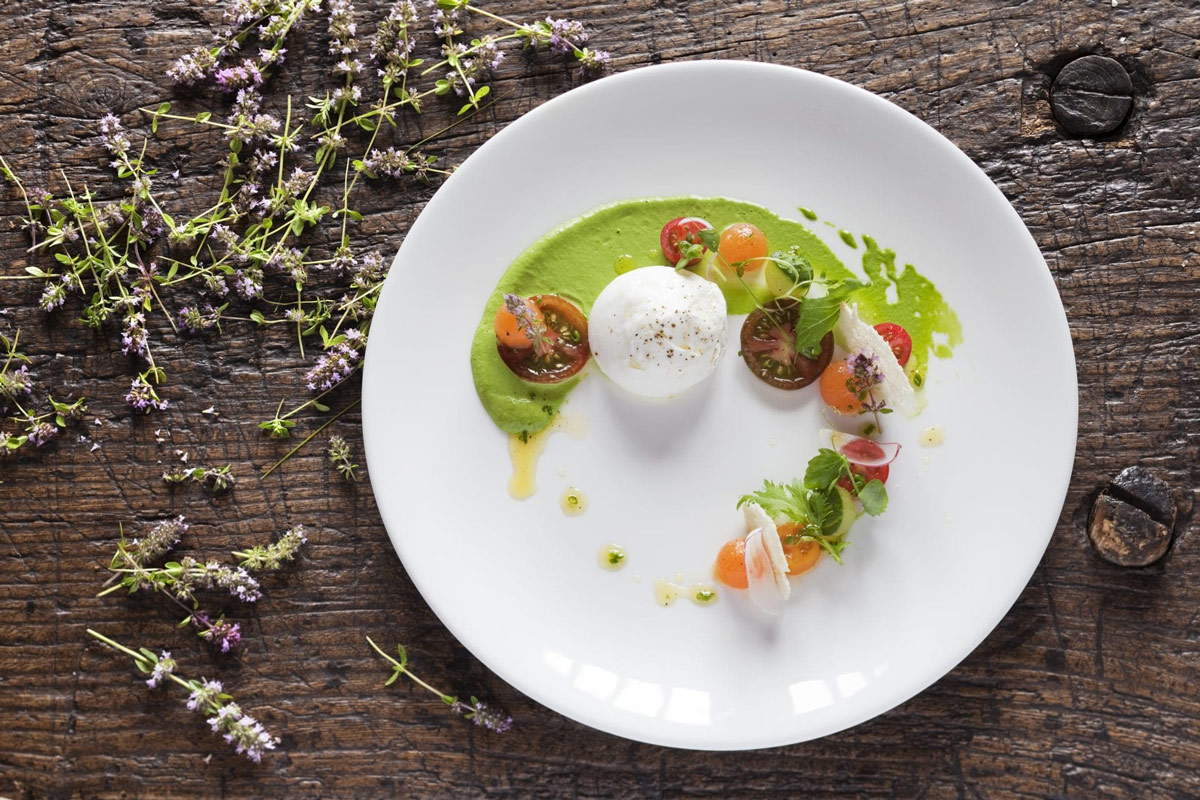
The dining philosophy of Twin Farm’s Chef Nathan Rich and his team revolves around the changing seasons, locally-grown herbs and vegetables available each day, and guests’ dietary preferences. Well-known California and French wines are paired with meals by Twin Farm’s Wine Manager/Sommelier Keven Ring, who manages a cellar of 15,000 bottles.
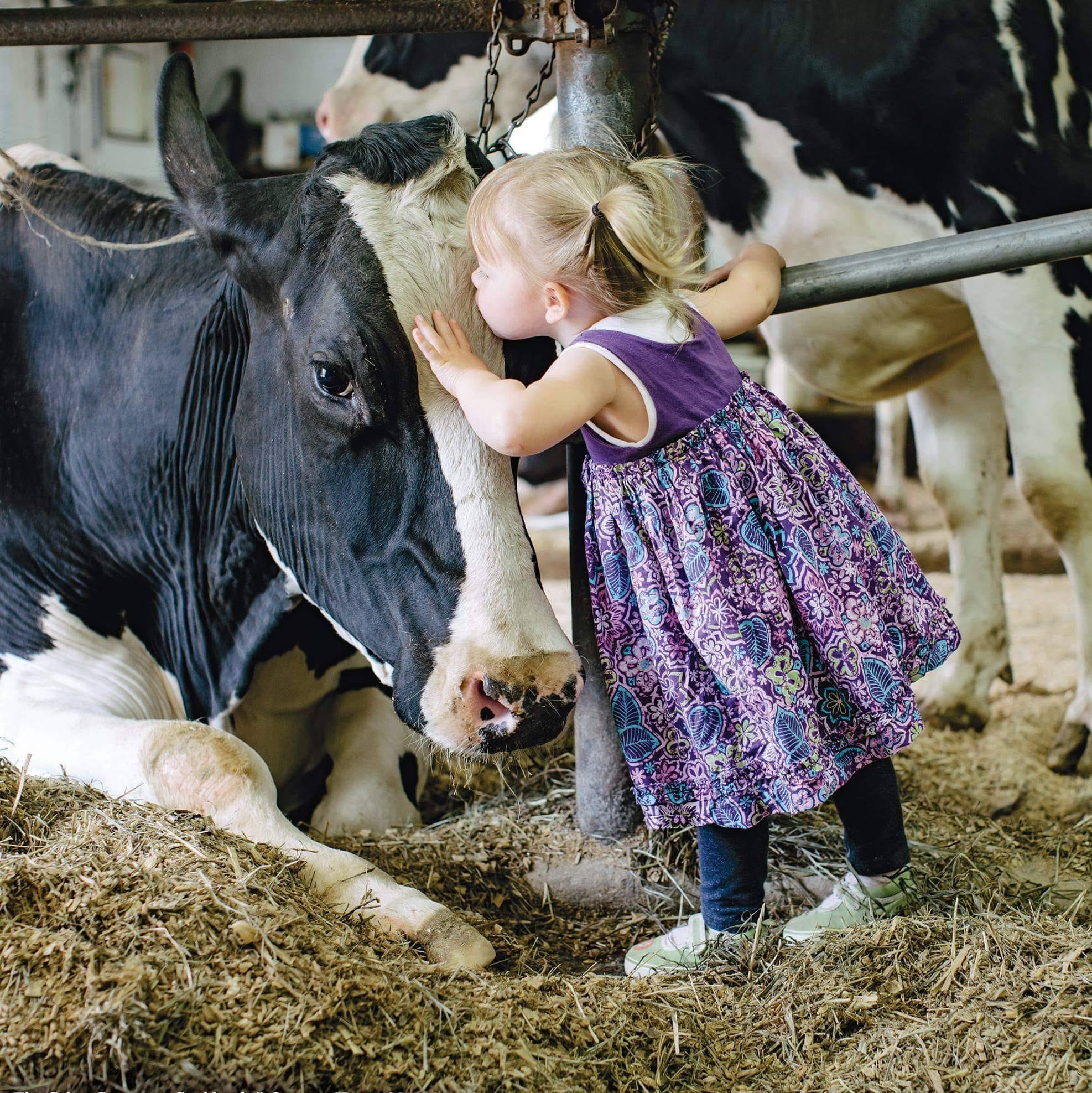
Liberty Hill Farm in Vermont at their livestock barn.
Getting back to nature and connecting with the land is a key feature of the agritourism movement. And especially with families, parents are finding that farmstays impart lessons in environmental education and stewardship that are important experiences for children and adults alike. “People are looking for ‘real’ vacations,” says Beth Kennett of Vermont’s Liberty Hill Farm, another popular agritourism stay in the U.S.
“On a deeper level, most folks are generations away from having family involved in agriculture. Parents want their children to understand more about what they eat and the environment, and how those things are connected.”

Hacienda de San Antonio, aerial view, with 22 suites and 3 grand suites as well as a formal indoor dining room, an outside dining terrace and a variety of romantic settings throughout the Hacienda grounds.
A long ways south of Vermont, in the fertile foothills of Mexico’s Volcano of Colima sits Hacienda de San Antonio, a mountain plantation that includes Arabica coffee, and livestock ranch, Rancho Jabalí, spanning 5,000 acres of lush and unspoilt highlands. Hacienda de San Antonio ensures you have plenty to do during your stay, and arranges local tours, hot air balloon and paragliding excursions, private yoga and meditation sessions in the natural landscape.
The care with which Hacienda de San Antonio handles its organic produce is felt in its cuisine, which supports local communities and innovates with sustainable practices via organic agriculture, horticulture, orchards and coffee plantation. If you’d like to see the operation with your own eyes, you’ll hop on any of the daily tours of the ranch and its facilities, learning about production of its 20 different cheeses, picking and preparing zesty salads on the spot in the property’s greenhouses with the head chef, witnessing the artisanal coffee growth and roasting, and unique essential oil production, before sampling these pure and fresh products. Hacienda de San Antonio is also known for its gourmet outdoor picnics, which can be arranged nearly anywhere anytime. Insider tip: you’ll want to arrange yours on ‘the deck’ and at the iconic Epazote, where ancient trees provide shade while guests take in views of the lagoon and observe el Volcán de Fuego in the backdrop.
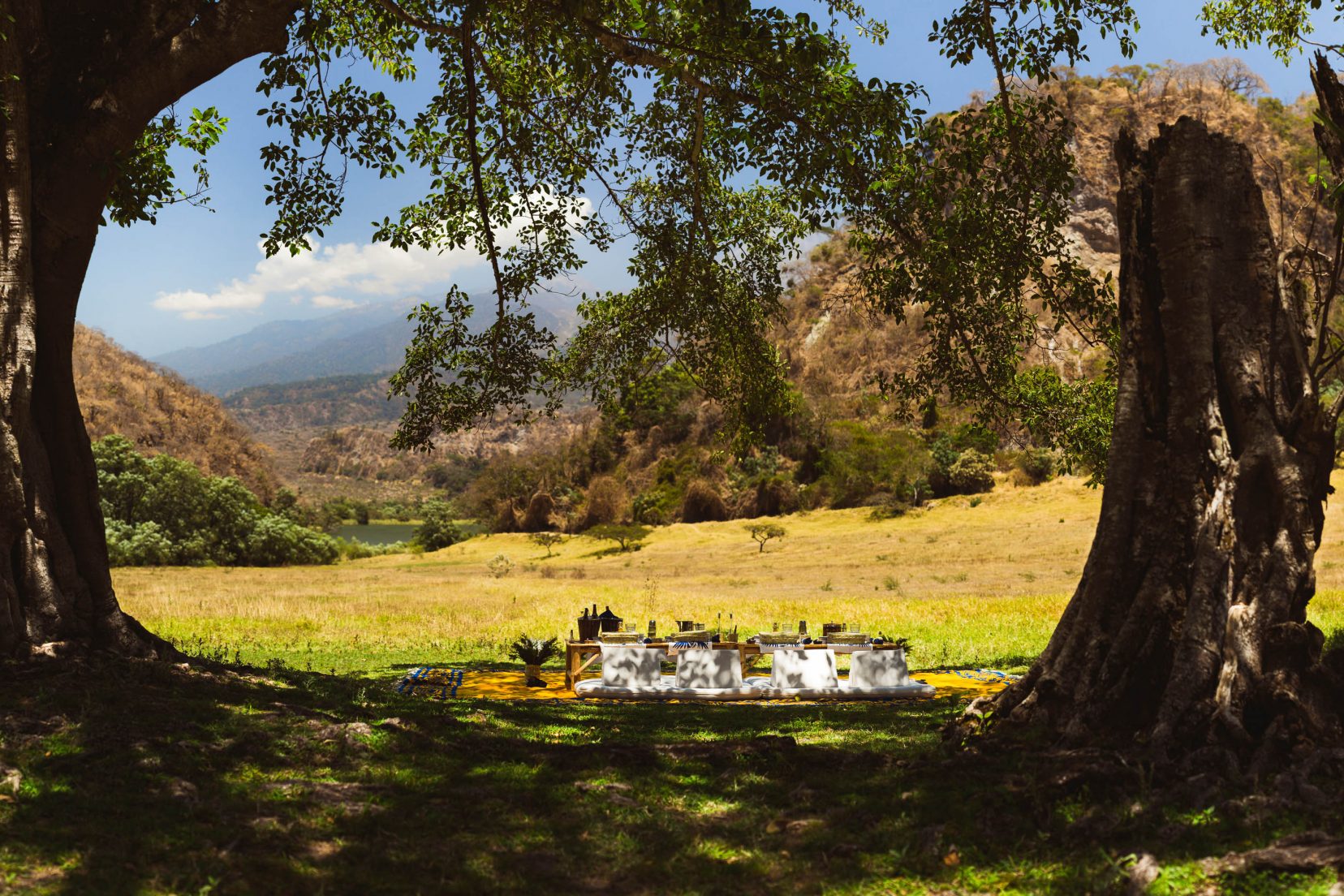
Just one on several locations for outdoor lunches at Hacienda de San Antonio.
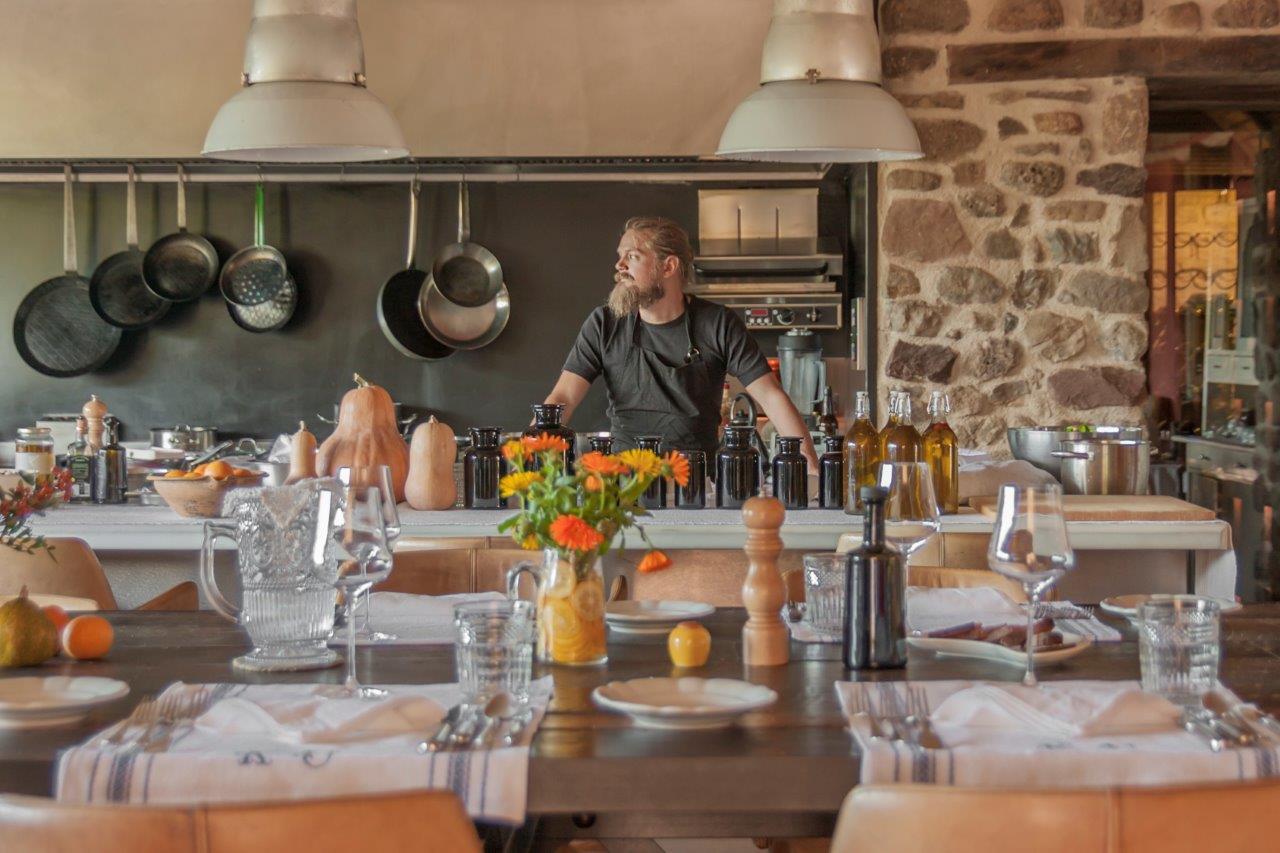
The traditional kitchen of La Donaira.
Thanks to its vibrant food culture, Spain is one such country in which agritourism has flourished with easy-to-find “eco-gastronomic weekend getaways” and farmstays. One particularly popular and lavish stay is situated in the hills of the Andalusian Serrania de Ronda in Southern Spain: La Donaira combines an organic farm and equestrian center with eco-retreat luxury. You won’t compromise comfort for the agritourism experience here, with its rustic cortijo-style rooms, spa services, yoga & meditation programs, and organic farm-to-table meals.
But an integral part of your stay will be to visit with La Donaira’s sheep, goats, and cattle, or take a horseback ride around 1700 acres of the resort’s Andalusian pasture, past rocky crags and old oaks to olive and almond groves, through green valleys dotted with plantations and organic orchards. You will tour the property vineyards and medicinal garden where the happy hum of La Donaira’s bees can be heard. Or to get your hands dirty, you can volunteer as a farmer for the day or even participate in La Donaira’s ecological education programs by attending a permaculture and biodynamic farming lecture with their “Soil Academy,” learning about seasonal produce and livestock. Agricultural self-sustainability isn’t always an easy practice, but all agriturismo businesses will say it’s the rewarding choice, and ultimately delicious.

La Donaira’s tradition of livestock husbandry.
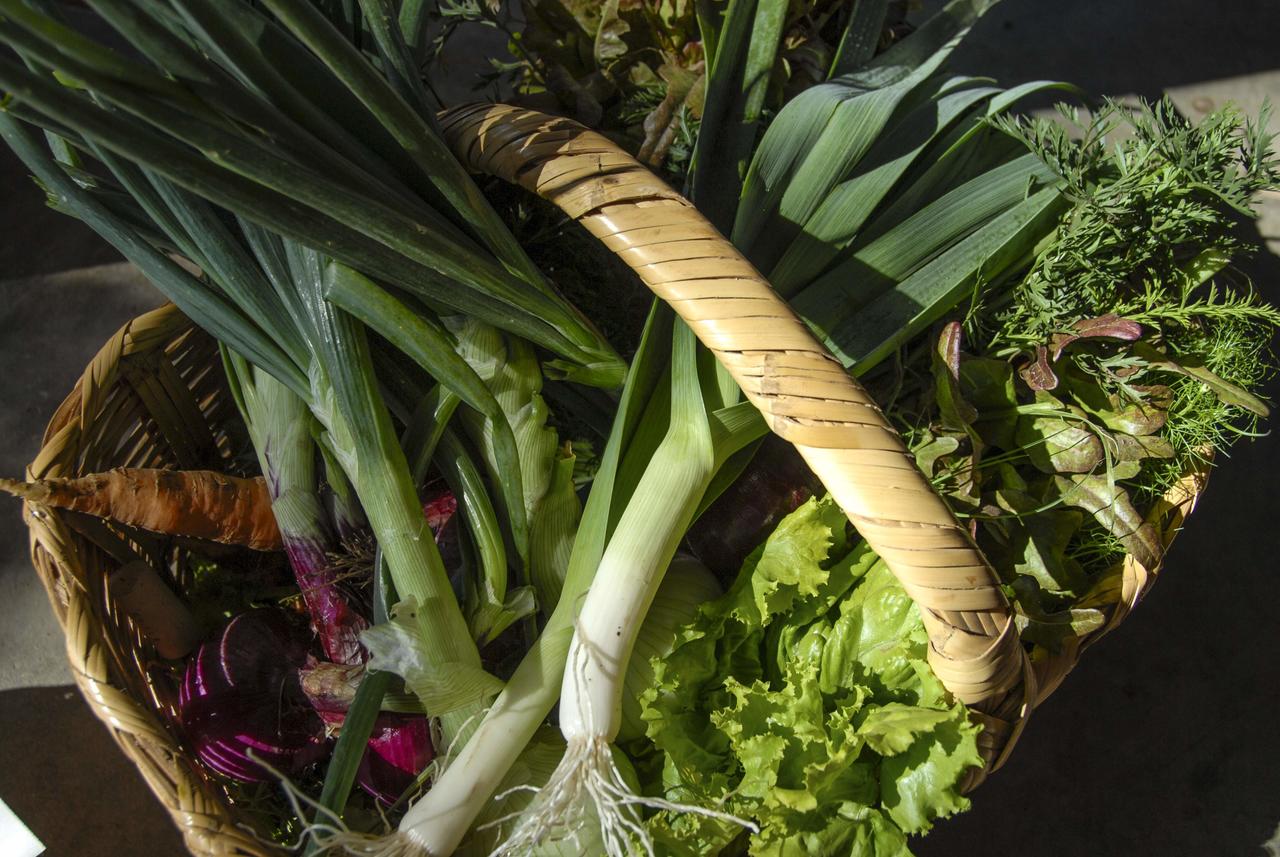
Seasonal garden produce from Hacienda de San Antonio.
The agriturismo industry is a beautiful, perfectly sustainable cycle: opening their businesses up for travelers gives growers, cultivators and croppers the chance to share their world with others. Their guests take advantage of affordable accommodations, enjoying scenic surroundings, food right off the farm, and warm hospitality: all this while supporting local businesses and farmers. This mutually-beneficial form of tourism gives travelers a taste of local culture and especially memorable experiences of heritage. Being a more responsible traveler has never been so enriching.








